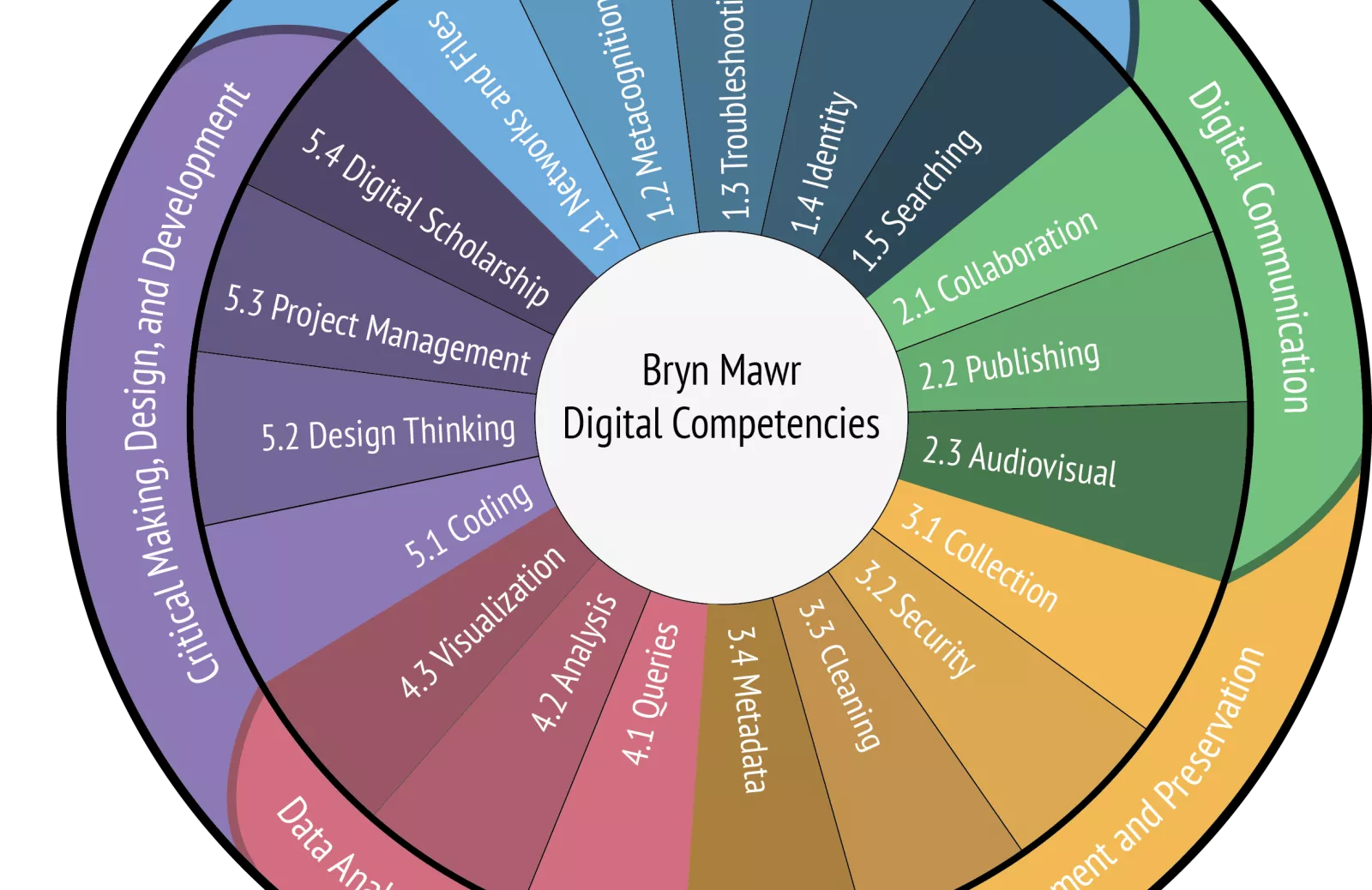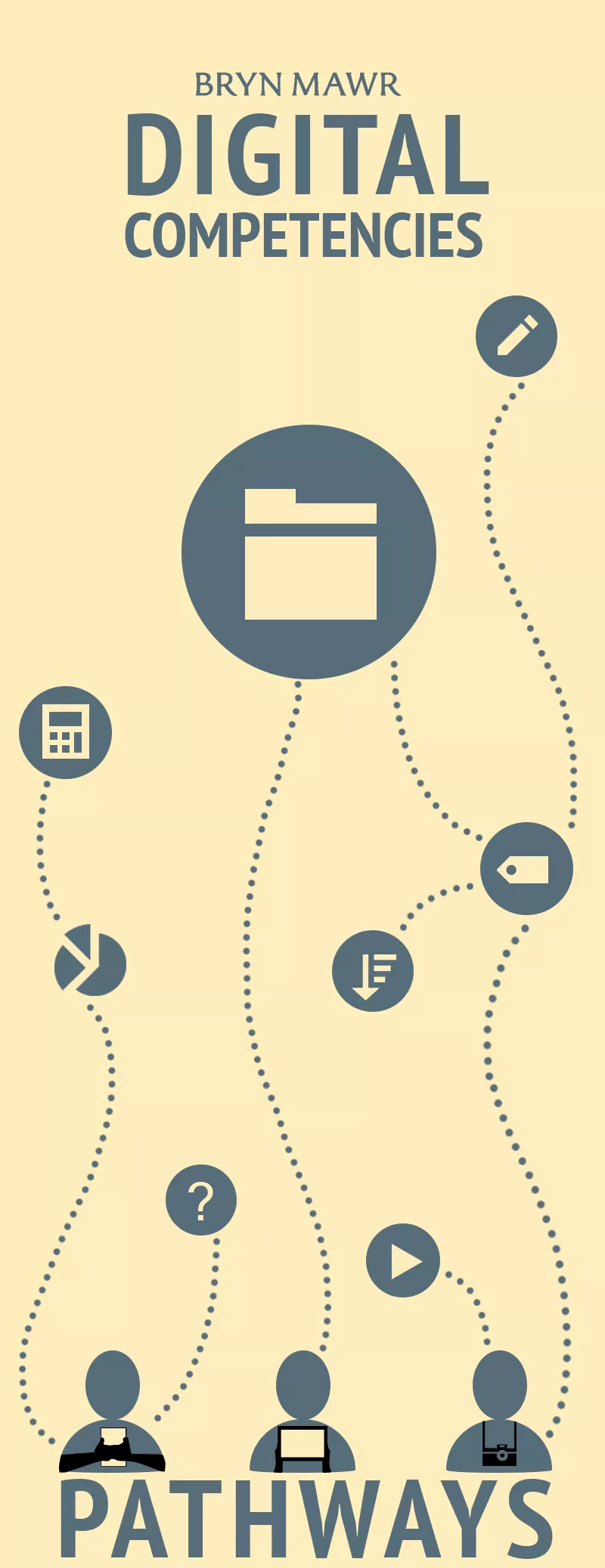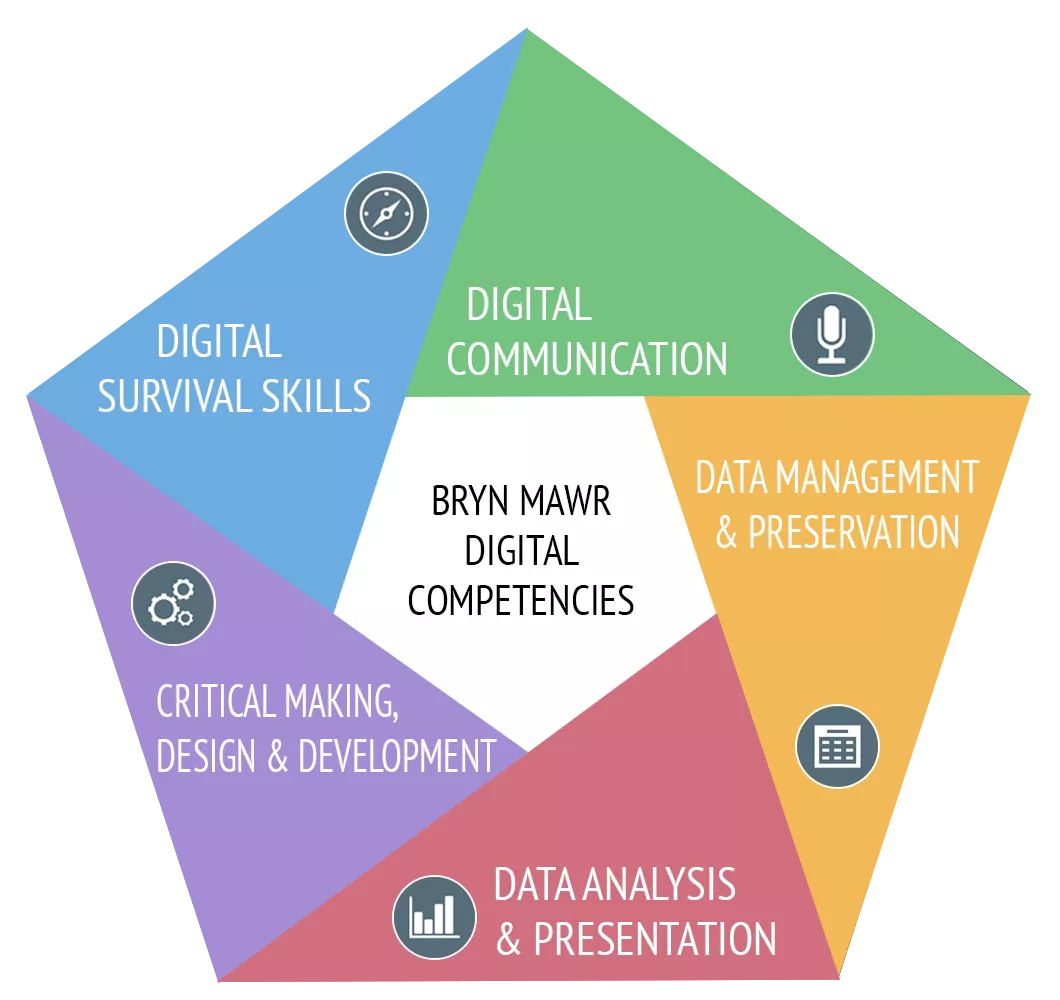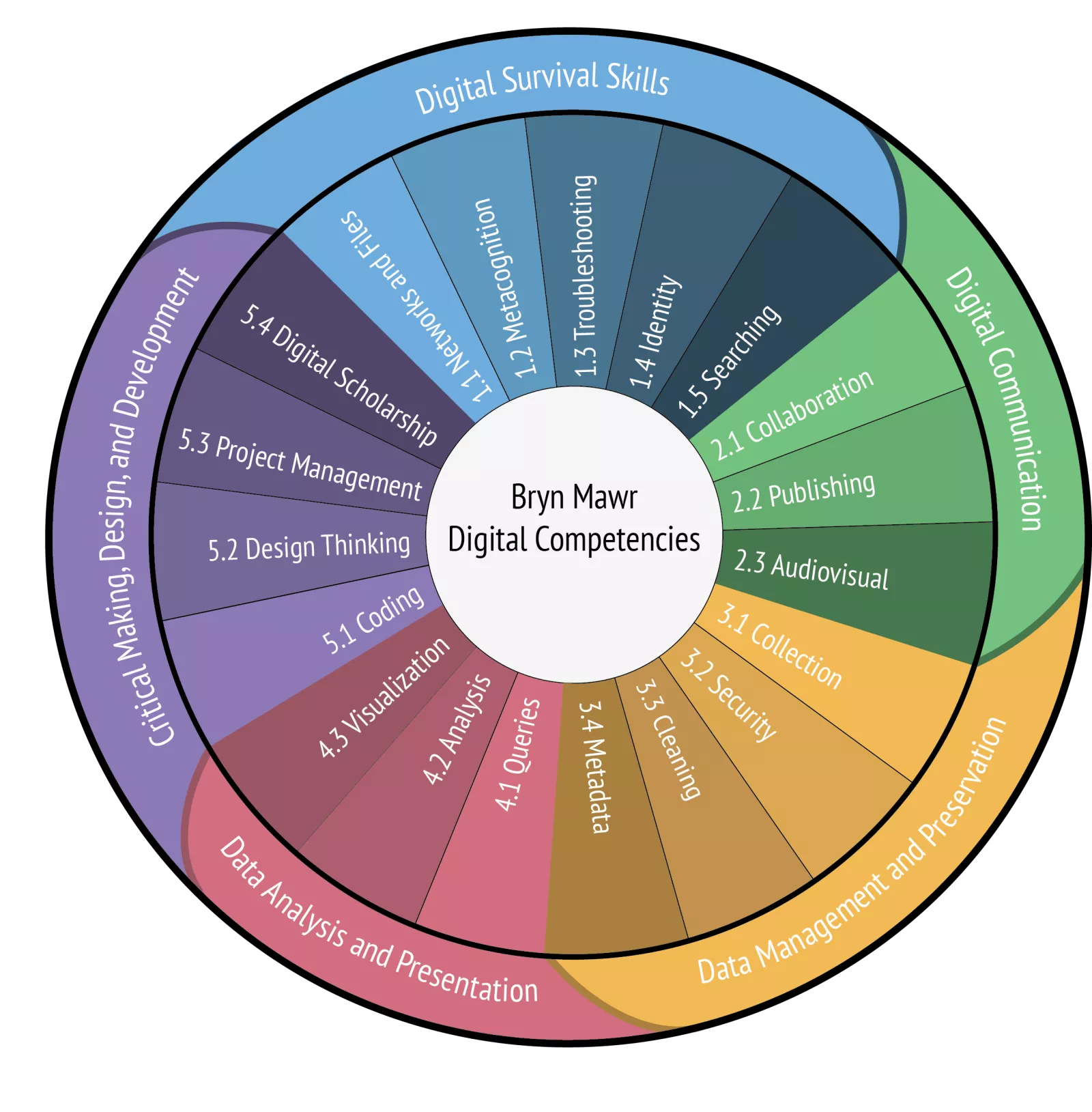
Bryn Mawr College's Digital Competencies Program helps students build the digital skills and critical perspectives on technology needed for success in the digital age.
In honor of our upcoming Competency of the Month, 2.3 Audiovisual analysis and production, we chat with Jennifer Orr '18, who has designed many of our digital competencies branding materials. Her work appears throughout this post.
How did you learn graphic design?
Orr is self-taught in graphic design, stating, "I have always liked beautiful things..." But it's not just the aesthetics of graphic design that appeal to Orr--it's also graphic design as communication. She's drawn to graphics as a way of building interest and connecting people to ideas.
Her interest stems originally from working on her high school yearbook. Inspired by the talents of others, she researched standards and best practices, studied magazines and catalogs for ideas, and taught herself InDesign. Her work paid off with increasing responsibility in the yearbook group and awards during high school Virtual Business competitions.
In the summer of her first year at college, she applied for an Educational Technology Services internship in LITS, bringing along her portfolio to display her strengths in design and photography. Since then, she's worked regularly with ETS, designing logos, handouts, and posters, including most of the material for the annual Blended Learning in the Liberal Arts Conference. Most recently, she's been designing digital competencies branding material, helping us communicate a complex framework of skills and concepts into her striking, clean graphic designs.
What advice would you give to someone interested in graphic design? Why?
Orr is constantly on the lookout for visual design ideas, even keeping a whole folder of visual inspiration. Her main advice is to experiment and learn from others. "Don't be afraid to try different things," says Orr. "A lot of what I do is trial and error, and sometimes I'll make a lot of versions of the same thing, waiting for that aha moment." She's learned a lot by being able to admit when she doesn't know things and by researching solutions online. Orr also advises budding graphic designers to be receptive to feedback: "Be open to criticism and critique on your work," advises Orr. "Being able to take that feedback and implement it into your next product is really important."
How do you think your audiovisual production skills might come in useful later on, in career/hobbies/etc.?
Orr is a Psychology major with a Health Studies minor, and is planning on a career in Public Health. While she's not going into graphic design as a career, she notes how widely applicable audiovisual production competencies are. Most fields, Orr points out, have the need for effective communication: "Visual communication really draws people in and attracts them... if you have these skillsets, it's very useful and makes you a more attractive candidate." For her field specifically, Orr notes, "education is really important for health, and visuals are very effective in getting that initial interest."
Even more than the specific skills, Orr believes that the problem solving skills she's gained doing graphic design projects will serve her well in the future. Graphic design is different from other tasks, Orr notes, because the people she works with often don't have a concrete end product in mind. Instead, they start with a message to convey. Navigating from this idea to the final design takes creativity, patience, and just a bit of mind reading. "It's complicated to fit in everyone's desires and get at what people are thinking to get the best, most cohesive product," she notes. "You really have to listen to what everyone else has to say, communicate within the team, and also find a way to communicate the intent of the design."
She also thrives on the detail and precision that goes into graphic designs. "It's really fascinating to look up backstory of a logo," she says. "Not everyone will notice. People just see a visual, and don't necessarily understand what went into it. But there's a whole history behind it, and it's really fascinating to be a part of that." On the digital competencies wheel graphic below, for example, Orr and the team debated whether the lines on the outer wheel should be arrows or curved lines. Ultimately, Orr and the team decided that arrows would inaccurately suggest that students needed to develop one competency area to move onto the next. The final choice of curved lines connects competency areas without implying a developmental relationship between them.
Ultimately, Orr sees graphic design as both a good creative outlet and a rewarding challenge. Each project is different, and each one brings new challenges and opportunities to learn: "Everything I design is so different and so new, that I'm always kept on my toes," Orr says.


